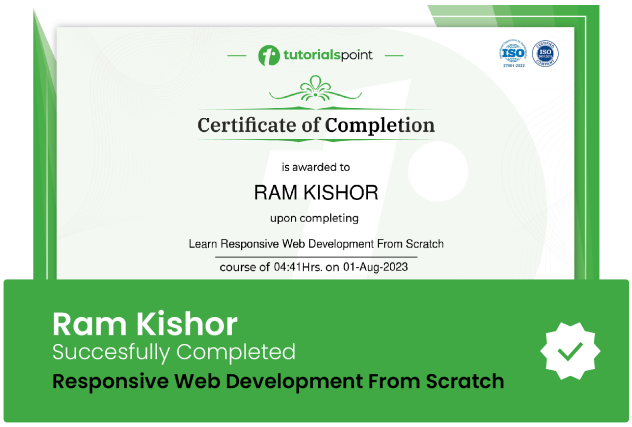Throughput Accounting and Lean Accounting
A grounding in the main issues in the Theory of Constraints, Throughput Accounting and Lean Accounting

Lectures -27
Duration -2.5 hours

30-days Money-Back Guarantee
Get your team access to 10000+ top Tutorials Point courses anytime, anywhere.
Course Description
The purpose of management accounting is to support decision-making and performance management in an organisation.
As accountants, therefore, we must have a wide range of tools and techniques that we can use to support the needs of our organisations. Throughput Accounting and Lean Accounting are both examples of flow accounting that provide tools for process-orientated organisations.
Throughput Accounting is designed to support management accounting in organisations that are implementing the tenets of the Theory of Constraints.
Lean Accounting, like Throughput Accounting, focusses on improving the flow of work through a business process and provides a variety of flexible tools to measure, manage and improve performance.
This course covers the Theory of Constraints, Throughput Accounting and Lean Accounting to give learners a thorough grounding of the main issues.
Topics covered include:
- What is the Theory of Constraints?
- What is Throughput Accounting?
- The Performance Measures of Throughput Accounting
- What is Lean Accounting?
- The Seven Aims of Lean Accounting
- Lean Performance Measures
- Performance measures and decision-making in Lean Accounting
- Accounting Transactions in Lean
- Throughput Accounting, Lean Accounting and the Financial Statements
There is a lot to cover and I have made it as clear and accessible as possible. Other than an interest in business finance and performance management, there are no pre-requisites for this course. I hope you enjoy it.
Who this course is for:
- Accounting students
- Accountants and financial managers in business
- Management accountants
- Business managers with an interest in financial performance management
- Learners with an interest in process management and costing
- Anyone interested in business management and improvement
Goals
What will you learn in this course:
- The basics of the Theory of Constraints
- Key principles in Throughput Accounting
- Why "flow" is important in the Theory of Constraints, Throughput Accounting and Lean Accounting
- The performance measures and KPIs of Throughput Accounting
- What Lean Accounting is and how it works
- A definition of lean
- The five Principles of Lean
- A brief history of cost accounting
- The seven aims of Lean Accounting
- The principles of Lean Performance Measures
- The three levels of performance measure
- A starter set of lean performance measures
- Performance improvement in lean accounting
- What is Value Stream Management?
- Kinds of Value Stream
- Key Lean Accounting tools
- Lean Accounting and accounting transactions
- Quantifying the benefits of improvement
- Lean Accounting and Customer Value
- Why plan by Value Stream?
- Throughput Accounting and Lean Accounting versus Financial Accounting
Prerequisites
What are the prerequisites for this course?
- An understanding of the basic principles of accounting will help learners but is not essential
- An understanding of the accounting terms "marginal costing" and "contribution" will be beneficial

Curriculum
Check out the detailed breakdown of what’s inside the course
Introduction
7 Lectures
-
Welcome to the Theory of Constraints 00:40 00:40
-
Introduction to the Theory of Constraints 00:51 00:51
-
The Theory of Constraints 09:35 09:35
-
Introduction to Throughput Accounting 00:30 00:30
-
Throughput Accounting 06:45 06:45
-
The Measures and KPIs of Throughput Accounting 05:53 05:53
-
Test You Knowledge Part 1 07:13 07:13
Lean Accounting Part 1
4 Lectures

Lean Accounting Part 2
10 Lectures

Summary and Lean Accounting Assignment
5 Lectures

Instructor Details

Ross Maynard
eCourse Certificate
Use your certificate to make a career change or to advance in your current career.

Our students work
with the Best


































Related Video Courses
View MoreAnnual Membership
Become a valued member of Tutorials Point and enjoy unlimited access to our vast library of top-rated Video Courses
Subscribe now
Online Certifications
Master prominent technologies at full length and become a valued certified professional.
Explore Now


 Updated on Apr, 2024
Updated on Apr, 2024
 Language - English
Language - English